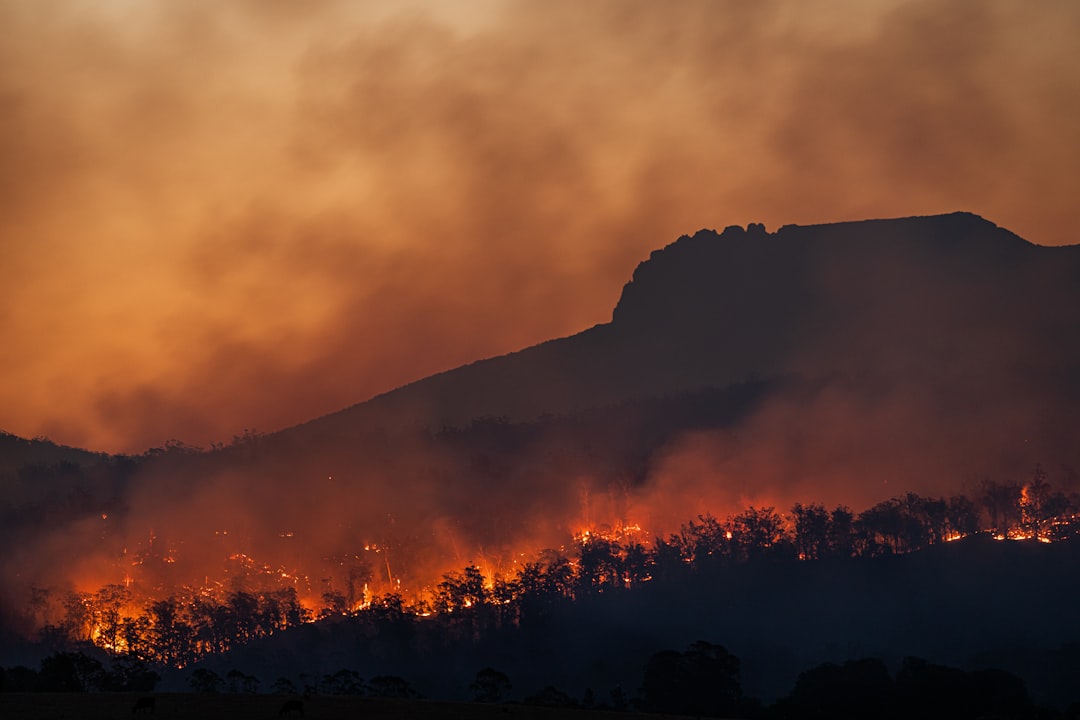The Alarming Surge in Global Temperatures (Image Credits: Unsplash)
Under skies heavy with the weight of unchecked emissions, experts are piecing together a picture that’s as clear as it is troubling for our shared future.
The Alarming Surge in Global Temperatures
Picture this: 2025 is on track to shatter records set just last year, with temperatures climbing faster than anyone anticipated. Researchers from around the globe have crunched the numbers, and the verdict is stark. We’re not just warming; we’re accelerating into uncharted territory.
This isn’t some distant threat. Heat waves that once hit every decade now strike yearly, baking cities and farmlands alike. The data shows we’ve already crossed thresholds that amplify every storm and drought, turning routine weather into potential disasters.
Yet, the real kicker comes from how these spikes feed into themselves. Warmer air holds more moisture, fueling fiercer rains and floods in one region while parching another. It’s a cycle that’s hard to break without bold moves now.
Fossil Fuels Hit a New Peak
Last year marked a grim milestone, with humanity burning more oil, gas, and coal than ever before. This frenzy released unprecedented levels of greenhouse gases, pushing atmospheric carbon dioxide to heights not seen in millions of years. Scientists point to booming industries and rising energy demands as the culprits.
Consider the ripple effects. Factories churning out goods, cars clogging highways, power plants firing up – these everyday engines of progress are supercharging the crisis. Without a swift pivot to renewables, experts say we’ll lock in decades of escalating harm.
Still, glimmers of hope exist in places shifting away from fossils. Nations investing in solar and wind show it’s possible, but scaling that globally remains the challenge. Time feels shorter with each passing month.
Earth’s Vital Signs Are Flashing Red
Imagine a doctor’s checkup for the planet, and 22 out of 34 key indicators are at all-time highs. That’s the reality from a fresh report by an international team, highlighting ice melt, sea level rise, and ocean acidification among the worst offenders. These aren’t abstract metrics; they signal ecosystems on the brink.
Arctic sea ice, for instance, is vanishing at a clip that exposes more dark water to absorb heat, worsening the melt. Coral reefs, vital for marine life, are bleaching white from warmer waters, collapsing food chains that billions rely on.
- Global surface temperature: Hottest on record.
- Sea levels: Rising faster than predictions.
- CO2 concentrations: Steadily climbing.
- Wildfires: More frequent and intense.
- Ocean heat: Absorbing 90% of excess warmth.
- Glacier mass loss: Irreversible in many areas.
What Does Climate Chaos Look Like Up Close?
Chaos isn’t hyperbole; it’s the new normal unfolding in real time. Think mega-storms battering coasts with winds that topple infrastructure, or droughts so severe they spark conflicts over dwindling water sources. In 2025 alone, we’ve seen floods displace thousands and wildfires rage through forests that once stored our carbon.
Communities feel it first. Farmers in the Midwest watch crops wither under blistering sun, while island nations brace for waves that swallow homes. The human toll mounts, from health crises in heat-stricken cities to migrations driven by unlivable conditions.
However, stories of resilience emerge too. Places retrofitting buildings for efficiency or planting urban forests offer blueprints. The question is whether we can replicate them fast enough to blunt the worst.
The Tipping Points We Can’t Afford to Ignore
Experts warn we’re nearing irreversible shifts, like the Amazon turning from rainforest to savanna, releasing stored carbon in a massive feedback loop. These tipping points could cascade, making even aggressive cuts to emissions fall short. The 1.5-degree Celsius goal from Paris feels like a fading memory.
Data from polar regions underscores the urgency. Permafrost thaw releases methane, a potent gas that traps heat far more efficiently than CO2. Meanwhile, weakening Antarctic ice shelves threaten sea level jumps that could inundate coastal cities worldwide.
| Indicator | 2024 Level | Trend |
|---|---|---|
| Greenhouse Gas Emissions | Record High | Increasing |
| Extreme Weather Costs | $300B+ | Rising Sharply |
| Biodiversity Loss | Accelerating | Critical |
Calls for Action Grow Louder
From Oregon State University labs to international forums, scientists aren’t mincing words. They describe this as the start of a “grim new chapter” unless leaders ramp up efforts. Cutting emissions isn’t optional; it’s survival, with pleas for policy shifts that prioritize clean energy over profits.
Public awareness is shifting too. Protests and voter demands push for accountability, reminding policymakers that delay costs lives. Innovations in carbon capture and sustainable agriculture provide tools, but they need investment now.
Though the path ahead looks daunting, collective will has turned tides before. The key lies in turning warnings into widespread change, starting today.
Key Takeaways
- Fossil fuel use hit records in 2024, driving up emissions and risks.
- 22 of Earth’s 34 vital signs are at historic peaks, signaling distress.
- Immediate global action on renewables could still avert the worst chaos.
In the end, this isn’t just about data or distant forecasts – it’s our world hanging in the balance, urging us to act before chaos becomes irreversible. What steps do you think we should take next? Share your thoughts in the comments.




